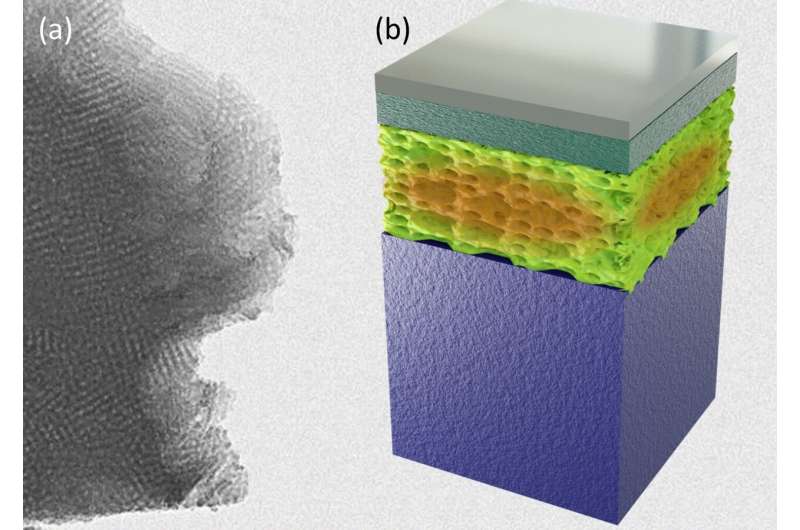This article has been reviewed according to Science X's editorial process and policies. Editors have highlighted the following attributes while ensuring the content's credibility:
fact-checked
trusted source
proofread
Manipulating hypersound in mesoporous materials

The rapidly advancing field of nanophononics focuses on the study of hypersound, which are acoustic waves in the gigahertz to terahertz range, at the nanoscale. These high-frequency acoustic vibrations, also known as acoustic phonons, have the potential to revolutionize various industries, including materials science, medical imaging, data processing, and quantum technologies.
For instance, the strong interaction between acoustic phonons, light, and electrons in matter at the nanoscale presents a significant opportunity for advancements in optoelectronics. However, manipulating hypersound has been challenging, in part due to the expensive methods required to fabricate high-quality devices with atomic flat interfaces that can confine these waves.
A team of researchers at the Center de Nanosciences et de Nanotechnologies—C2N (CNRS, Université Paris-Saclay) led by Dr. Daniel Lanzillotti-Kimura and Dr. Galo Soler-Illia (Instituto de NanoSistemas, Universidad Nacional de San Martin, Argentine), has addressed this challenge in an experimental work published in the journal Photoacoustics by using mesoporous thin films to manipulate hypersound. Mesoporous materials based on silica and titania have a regular pattern of pores with sizes approximately ten thousand times smaller than the diameter of a human hair, and rely on more affordable fabrication methods.
In this study, the researchers fabricated mesoporous thin films using a sol-gel process. They then used ultrafast laser spectroscopy to generate, detect and study the properties of the confined phonons. "The striking element of this work is that, although the pore sizes are comparable to the acoustic wavelengths, the mesoporous thin films are still capable to sustain the acoustic vibrations," said Daniel Lanzillotti-Kimura.
The study has far-reaching implications, and the researchers are now exploring the potential applications of their findings. Specifically, mesoporous materials are susceptible to infiltration of liquids and gases, which changes their optical and acoustic properties. "Our next step is to explore the liquid infiltration capability of mesoporous materials for use in practical applications, such as sensing," said Edson Cardozo de Oliveira, leading author of the published work.
"We believe that this research will lead to the development of new and innovative technologies that will have a significant impact on various industries." The team's findings are a significant contribution to the field of nanoacoustics, and the research has the potential to pave the way for exciting developments in the future.
More information: E.R. Cardozo de Oliveira et al, Probing gigahertz coherent acoustic phonons in TiO2 mesoporous thin films, Photoacoustics (2023). DOI: 10.1016/j.pacs.2023.100472
Provided by Centre for Nanoscience and Nanotechnology





















